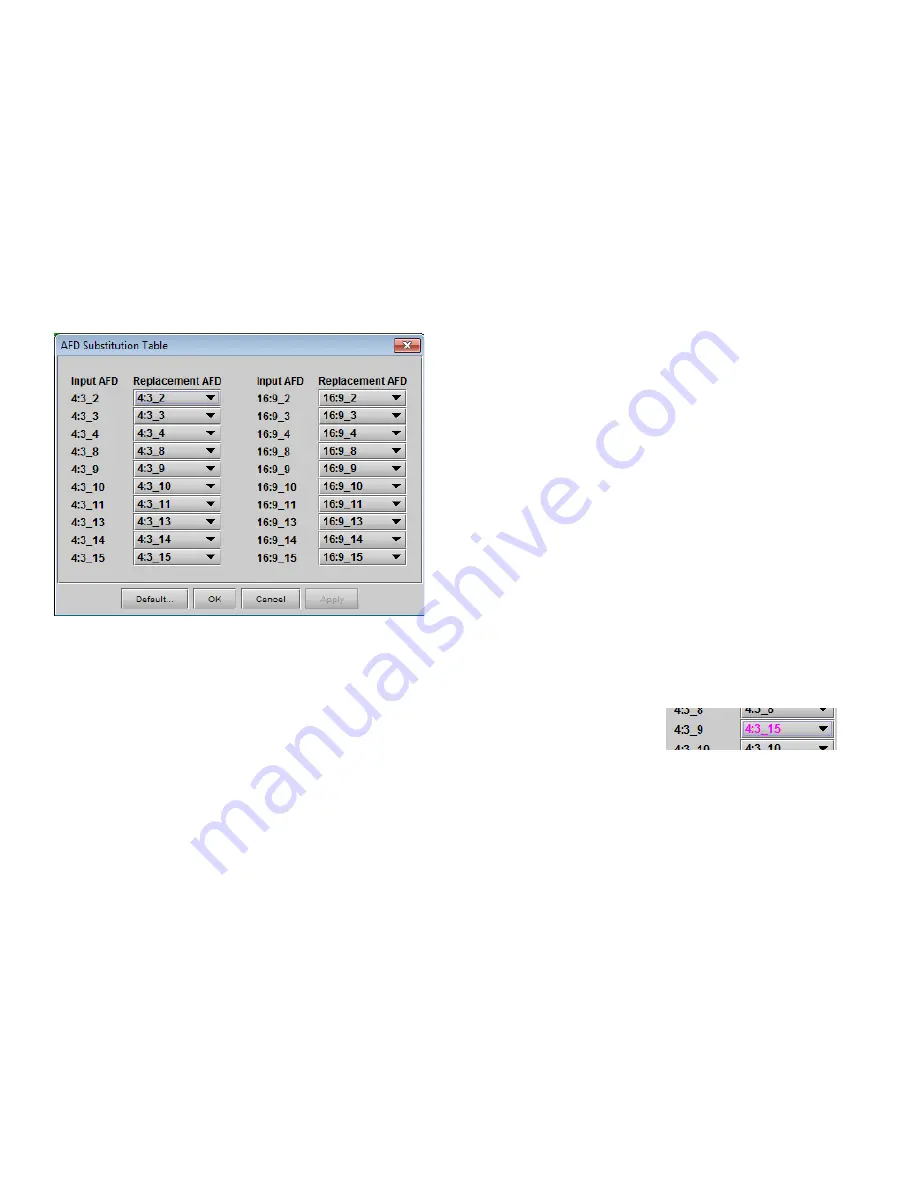
GUIDE TO INSTALLATION AND OPERATION
18
| AMX-1901
Keep Last:
Select this checkbox to use the last AFD code detected at the input as the default code to be used in the
Auto
mode when no AFD flag is detected. This box is disabled in the
Insert
mode.
Field Extract AFD & VLI:
Use the pull-down to select Field 1, Field 2 or Field 1 & 2
5.3.2.2 AFD Substitution Table
In the AFD mode, it is possible to set up a systematic AFD substitution scheme, where incoming AFD flags can
always be replaced by different flags, according to the AFD Substitution table.
•
Select the Enable AFD Substitution checkbox to use this feature. The checkbox is only available in Auto mode
Click the
Edit Table…
button to open the AFD Substitution Table
•
The table lists all possible Input AFD flags, and beside each is a
Replacement AFD
pulldown list that also lists
all possible AFD flags.
•
If the Replacement AFD does not match the Input AFD, the Replacement AFD
name is colored, so that it is immediately obvious which AFDs will be substituted.
Note: AFD substitution is ignored when no source flag is detected at the input. In this case, the Default flag is used.
These controls are located at the bottom of the tab:
•
Default – restore the table to default mode, where the replacement AFD always matches the Input AFD.
•
OK – make any proposed changes and close the table.
•
Cancel – close the table without making any of the proposed changes.
•
Apply – make any proposed changes, and leave the table open.
5.3.2.3 Error and Warning Messages (SD only)
During SD operation, situations may arise when a conflict has occurred or may occur due to the enabling of certain
metadata parameters such as time code insertion, SMPTE 2016/VLI insertion, or Dolby Metadata insertion.
•
A warning message will appear at the bottom of the Metadata / AFD panel.
•
See for an example.
Here is a list of all possible messages that may be displayed and a description of the error or potential conflict.
Figure 5.6 AFD Substitution table






























